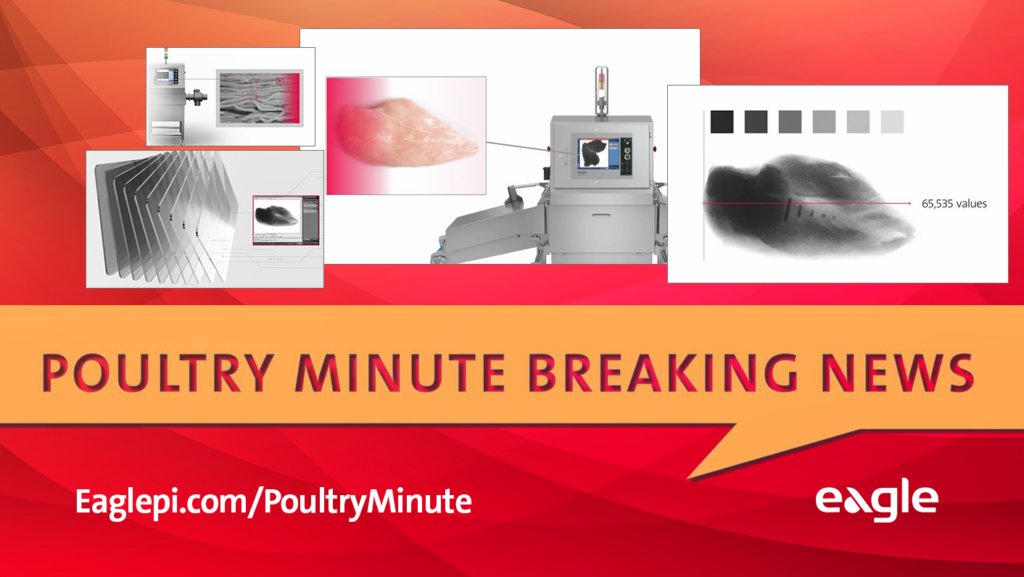HACCP plans are effective because they identify and address critical control points in an operation. In a similar and more specific way, identifying and analyzing your vulnerabilities to physical contaminants—from receiving to processing to packaging—can help you gauge your risk for a safety-related food recall and lower that risk through protective measures like x-ray inspection.

Finding Your Points of Vulnerability
Is your operation optimally reducing risks of physical contaminants that can lead to food safety-related incidents and recalls? Perhaps taking another point of view (POV) of your risks from end-to-end can give you an idea of the effectiveness of your current interventions.
But there’s another kind of POV—points of vulnerability. Determining your points of vulnerability for physical contaminants is akin to identifying critical control points that are part of your HACCP program.
After all, contaminants can be introduced at many points. Any time you have employees around equipment, there is vulnerability, like a knife on a cutting line or a hand tool someone is holding. X-ray systems can protect your products by finding and rejecting these and other foreign materials at key points of vulnerability:
- Incoming raw material: Do your ingredient suppliers inspect for contaminants before they ship items to you? If they are not, checking incoming raw materials and ingredients is an early and pivotal point of vulnerability. Contaminants can trickle back through the whole supply chain, and can include anything from buckshot imbedded in beef or pieces of rock combined with farm produce. X-ray inspection can find contaminants like these and others.
- In-process: It makes sense to add x-ray machines after the first few steps of processing. There are points of vulnerabilities in those stages, especially any time there is friction on a device, like a grinder or mixer, which can cause something to break. We’re starting to see demand for more units in a line to detect contaminants and also to demonstrate that a manufacturer is proactive in their safety efforts. Automating inspection processes and streamlining throughput can make finding these points of entry much easier with advanced x-ray inspection equipment. We work with customers to determine where these points of vulnerability are along their line, identifying them as critical control points for food safety. We then add the proper x-ray system that fits the production line needs to mitigate risks and ultimately prevent a food recall.
- Packaging: Inspecting packages is a stopgap measure to make sure tainted products don’t leave your facility. There are vulnerabilities in this stage of production as well. A package may contain a foreign body, or perhaps it has food trapped in a seal compromising freshness. X-ray inspection machines can locate contaminants within sealed packages that are already boxed. Or something may become embedded during the process of forming the final package. We often inspect packaging right before it goes on the pallet and out the door as an added safety and quality precaution. Furthermore, it’s important to make sure those points of vulnerability don’t open up again. Ensuring machinery is running properly by having a performance verification program in place is crucial in ensuring continual safety.
X-ray Systems Help Combat POV
The rise in the number of food recalls has prompted many companies to embrace product inspection as a cost-effective measure against the threat of damaging and expensive product recalls due to glass, metal or bone contamination. While the physical recall costs—such as publication alerts, transport of the recalled products back to the factory and lost revenue—are relatively straightforward to calculate, it is difficult to determine the more sweeping ramifications of a food recall, like brand damage in the eyes of consumers.
Most large retailers like Wal-Mart and Costco and fast food chains like McDonald’s have drawn up policies on quality control with which they expect their suppliers to comply. Manufacturers must demonstrate compliance in order to break into these new lucrative markets. That’s why they’re turning to x-ray inspection technology as a way to demonstrate to their retailer customers and regulatory authorities that they meet the required standards.
Other Benefits of X-ray Inspection Systems
In addition to lowering risks at points of vulnerability, x-ray systems offer other benefits through various stages of the manufacturing process. They identify hidden product defects that may not be dangerous to the user but are still disappointing, such as: the low fill of jelly in a pastry, the underweight portion of rice in a two compartment ready meal, a slice of meat trapped in the seal of a pack, or an incorrect number of chocolates in a box. Reputation is vital to a food manufacturer’s future. By minimizing the possibility of contaminated or defective goods reaching the consumer, the manufacturer can protect its brand, enhance sales and safeguard profits.
Contact us to talk to an expert about your unique application and find out all the ways Eagle can improve your quality program.

.svg)

